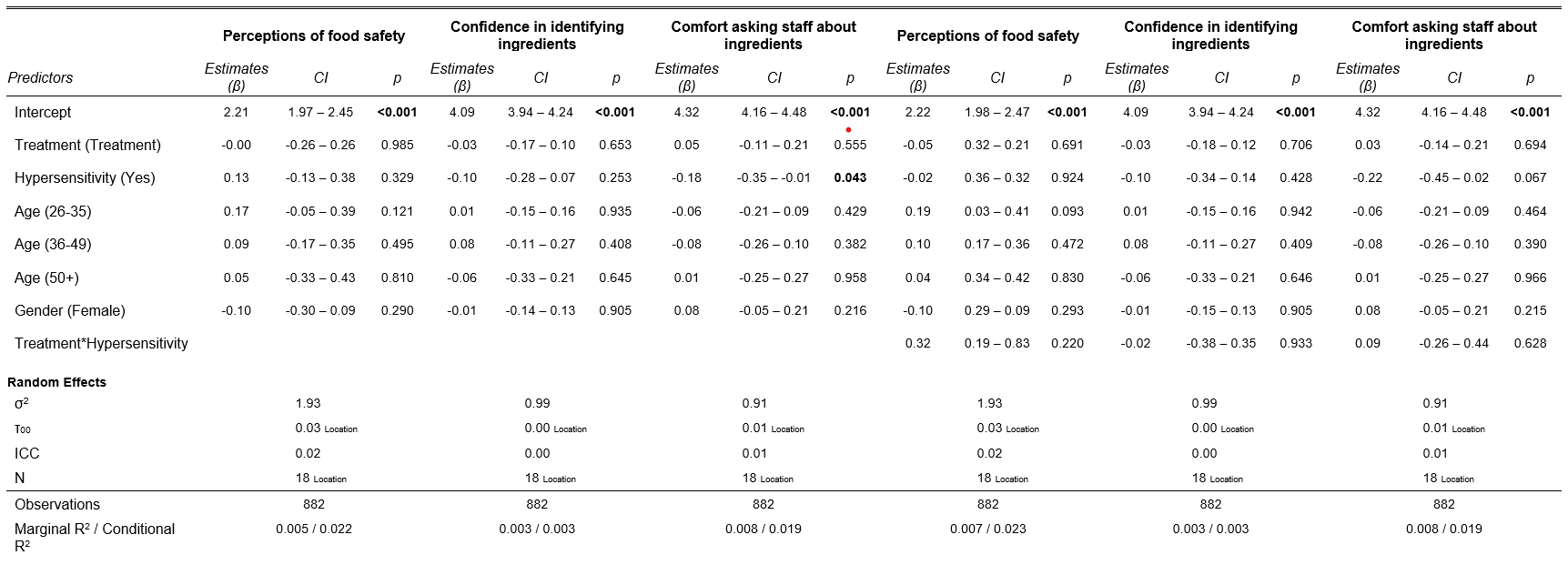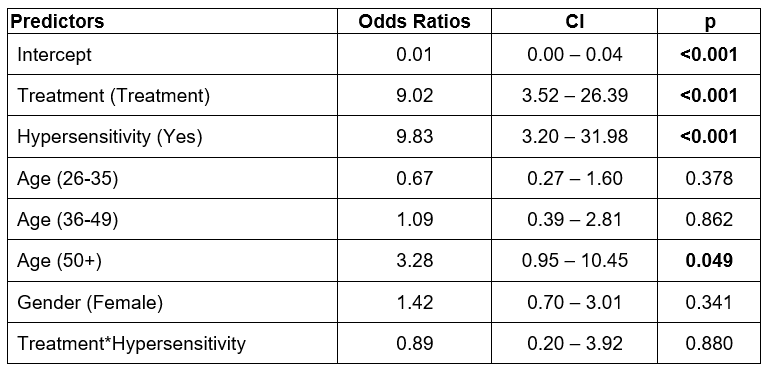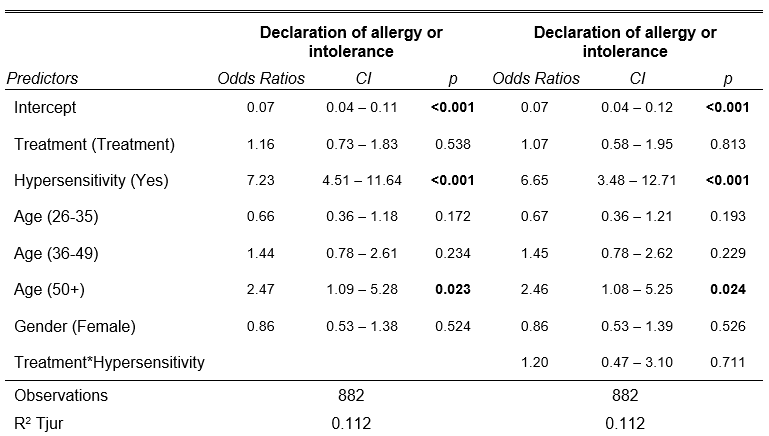Does proactively asking about allergens before ordering by Food Business Operator staff improve customer outcomes?
Appendix 1: Interaction Models and ITT Model Outputs
This sections covers the interaction models and ITT model outputs for proactively asking about allergens behavioural trial report.
Table 7: Model outputs, interaction models


Table 8: Model outputs, intent-to-treat models (primary outcomes)

Table 9: Model outputs, intent-to-treat models (secondary outcomes)


Table 10: Model outputs, interaction models II - Declaration of allergy or intolerance

| Predictors | Odds Ration | CI | p |
|---|---|---|---|
| Intercept | 0.01 | 0.00 to 0.04 | <0.001 |
| Treatment (Treatment) | 9.02 | 3.52 - 26.39 | <0.001 |
| Hypersensitivity (Yes) | 9.83 | 3.20 - 31.98 | <0.001 |
| Age (26 to 35) | 0.67 | 0.27 - 1.60 | 0.378 |
| Age (36 to 49) | 1.09 | 0.39 - 2.81 | 0.862 |
| Age (50+) | 3.28 | 0.95 - 10.45 | 0.049 |
| Gender (Female) | 1.42 | 0.70 - 3.01 | 0.341 |
| Treatment Hypersensitivity | 0.89 | 0.20 - 3.92 | 0.880 |
Observations: 508
R Tiur 0.231
* This model was conducted using a model without a random intercept, which had a better fit (AIC = 248.200, vs 250.207)
Table 11 Model outputs, intent-to-treat models (secondary outcomes II)

Revision log
Published: 20 April 2023
Last updated: 22 April 2024